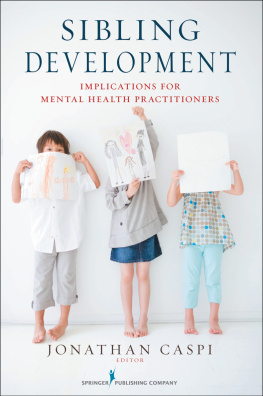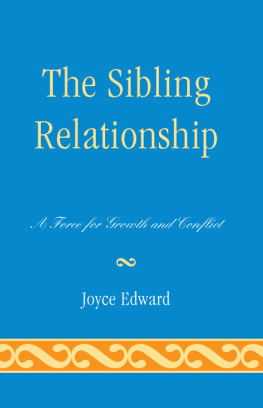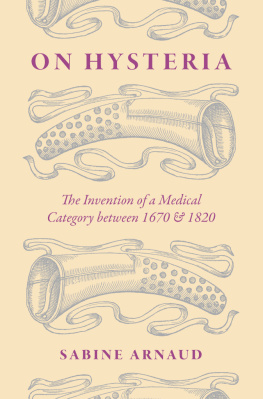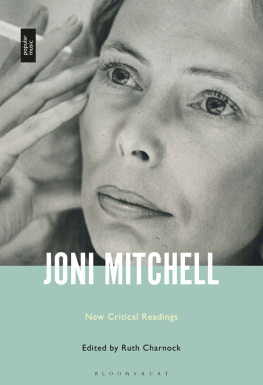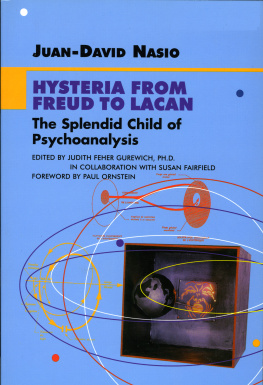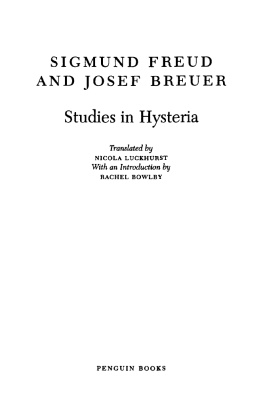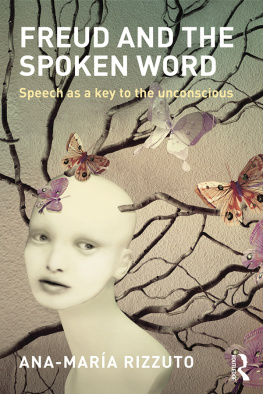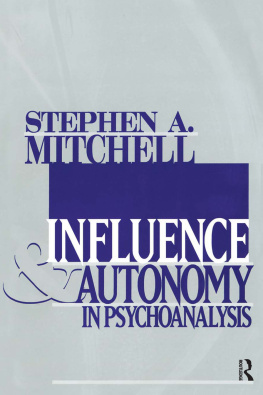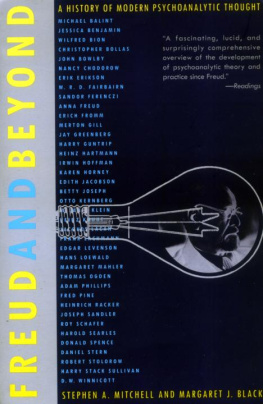All rights reserved. Printed in the United States of America. No part of this book may be reproduced in any manner whatsoever without written permission except in the case of brief quotations embodied in critical articles and reviews. For information, address Basic Books, 10 East 53rd Street, New York, NY 10022-5299.
Preface
My initial interest in hysteria came from a double perspective from feminism on the one hand and from psychoanalysis on the other. For both, though separately, hysteria has been crucial.
It is widely argued that hysteria has disappeared from the Western world during the twentieth century. As far as I am concerned, this remarkable claim opens rather than closes the issue. First, I would argue that it has not disappeared as the frequent use of the word to describe conditions in the community testifies. Rather, it had a brief history as a disease and it is this categorization which has been coming to an end, much as its diagnosis as witchcraft or possession has sometimes terminated in other times and places. Hysteria also migrates. Supremely mimetic, what was once called hysteria manifests itself in forms more attuned to its new social surroundings. What was once a subsidiary characteristic becomes dominant and vice versa.
From my double perspective, two factors stand out as needing examination to account for the disappearance of a historically specific disease diagnosis. The first involves both feminism and psychoanalysis; the second primarily psychoanalysis, and feminism only secondarily in so far as it has made use of psychoanalysis. However, both implicate femalemale social relations and our understanding of them and hence are of concern to the political theory of feminism.
The first factor is the advent of the full recognition of male hysteria. Of all the psychic, mental, emotional or behavioural conditions known to humankind, it is hysteria which has been bound with bands of steel to femininity, and hence very largely to women. Feminism, in seeing hysteria as the protest of the disadvantaged and hence above all of women, has niade little of hysterical men except in so far as it can assimilate them to this position, as it has done with working-class men, nineteenth-century east European Jews or male immigrants, or to the position of the traumatized, as has been done with war neurosis from the Great War to the Gulf War. Equating hysteria with disadvantage misses half the problem. This half is the issue of hysterical violence.
Psychoanalysis also made nothing of the male hysteric. It is often remarked that all the great discoveries of psychoanalysis, indeed the theory of psychoanalysis itself, have emanated from work with hysteria. This is certainly true. However, the critical claim that inaugurated psychoanalysis was that men could be hysterical. By espousing and furthering this observation (initiated by Jean Martin Charcot), Freud instituted psychoanalysis as a theory about universal human processes. This would hardly have been possible had hysteria been limited to women. But psychoanalysis, too, slipped from explaining to endorsing its proclivity in women. Two reasons for this can be highlighted.
The first of these reasons arises from a difficulty internal to psychoanalytical theory: that is, the non-elaboration of the hypothesis of a death drive in general, but in particular in relation to hysteria. In the classic account, hysteria is the failure to demolish sexual desires for the mother and then for the father (the Oedipus complex). This, I believe, is only half the picture. Again, as with feminists accounts of hysteria, what is missing is that there is violence as well as sexuality in the seductions and rages of the hysteric. Reading hysteria through the death drive that Freud hypothesized following the psy-choneuroses of the First World War puts the male hysteric back in the picture and fills out that picture to include the evil that is too often omitted.
The second reason, from my double perspective of feminism and psychoanalysis, for why we no longer see the hysteria that stares us in the face is a larger omission. This is the omission of the key role played in the construction of the psyche by lateral relationships. In referring to these as sibling relations I am using the term extensively to include all those who stand in the position of siblings, whether biologically related or not. It is these and their heirs in peers and partners that are missing from our understanding of hysteria. Anthropology lias long recognized the siguilicanee oi these relations although not in relation to hysteria); psychoanalysis has subsumed them to the vertical child-parent relationship.
Once one brings in siblings, hysteria emerges. Likewise, understanding hysteria calls forth siblings. Siblings are everywhere in psychoanalytic accounts-even though they are absent from the theory and the clinical practice. Together with the death drive, they help account for many things we are otherwise puzzled by in social situations if we stay only with the vertical axis of explanation. Any elaboration of the death drive has seen it as either destruction (Melanie Klein) or as the effects of trauma (French psychoanalysis). It is both. It is a drive, or a force, towards inertia or stasis, that can turn outwards in destructiveness towards others. When a sibling is in the offing, the danger is that the hero His Majesty the Baby will be annihilated, for this is someone who stands in the same position to parents (and their substitutes) as himself. This possible displacement triggers the wish to kill in the interest of survival. The drive to inertia released by the shock becomes violence. Or it becomes a sexual drive, to get the interests of all and everyone for oneself. There are rules against sibling incest and sibling murder but in smaller ways rules are broken daily what is the widespread practice of wife-beating but a breaking of that rule that one should not hit someone smaller than oneself?
I am not arguing that the lateral should replace the vertical axis -but that they are brought into conjunction. This conjunction in its turn opens up several perspectives. I have suggested a parthenogenetic complex, in which the hysteric perpetuates the idea, voiced initially to himself or among peer groups but in imitation of the mother, that one can make a baby from oneself. This opens out into questions of social practice, not single mothers but the fury that can arise against a child when one does not know boundaries or how to symbolize the other as different from oneself. Over and above the many specific issues that can fall within a framework that adds the lateral to the vertical is that this helps us account for hysteria as a universal possibility. The post-modern emphasis on difference has been at the expense of transversality the variations always present within the universality. Hysteria and lateral relations that take up positions which are simultaneously the same and different may make a contribution to resolving this dichotomy, to allowing for a perspective of both/and rather than either/or.


